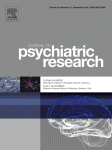 A retraction from a high-profile group uncovered a technical limitation involving a widely used reagent.
A retraction from a high-profile group uncovered a technical limitation involving a widely used reagent.
Some quick background: the sequence hypothesis central hypothesis dogma of biology states that DNA gets transcribed to RNA that gets translated into proteins. Some RNAs, however, don’t code for proteins, but instead help to regulate gene expression. These microRNAs are tiny in size, but can regulate gene expression across animal and plant kingdoms.
In September 2011, the Molecular Cell published an entire issue with regulatory RNA as its theme. V. Narry Kim, associate professor at Seoul National University and high-profile microRNA researcher contributed a study that her group has now retracted just months later on June 29.
The problem? A reagent used to purify miRNAs favors some miRNAs and fails to isolate those rich low in guanine and cytosine — two of the four building blocks of RNA — or those with few secondary folding structures.







